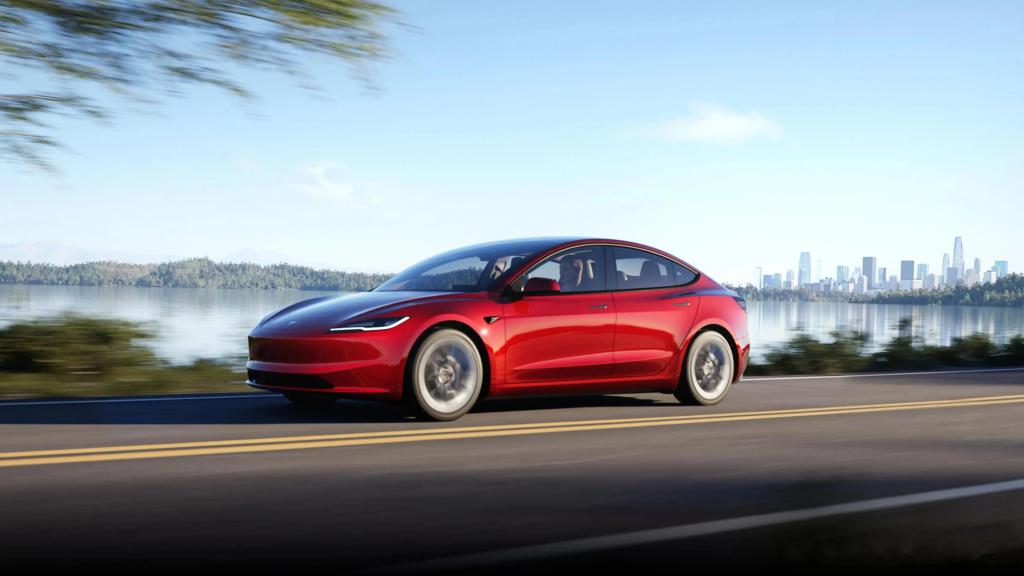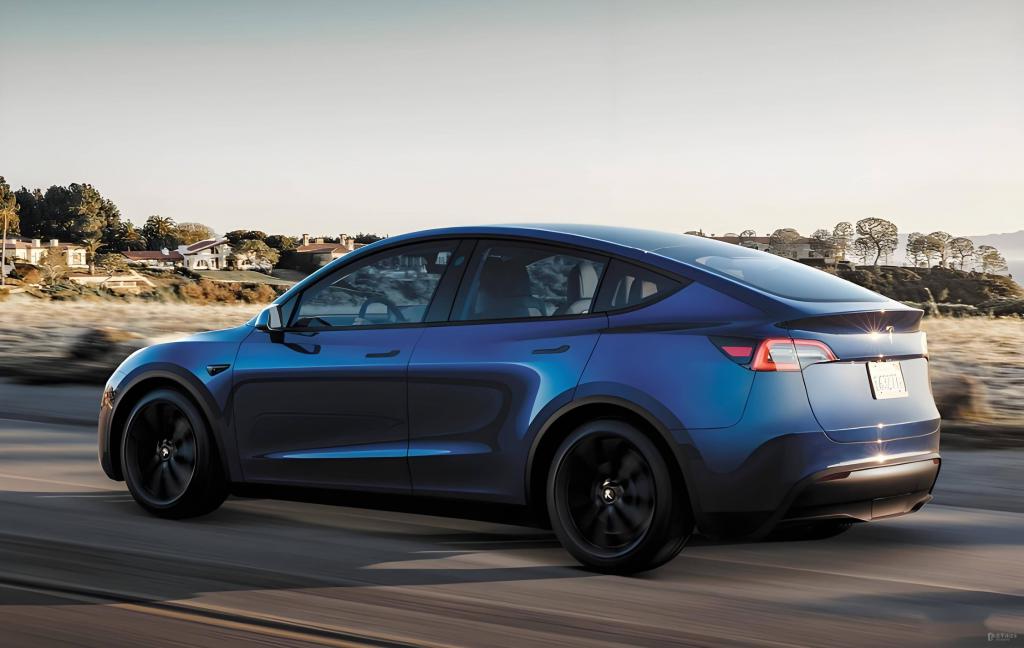Tesla vs. Xiaomi: Which Car Company Has the Strongest Capabilities?
Which car company is the strongest?
In today's highly competitive automotive market, electric vehicles are undoubtedly one of the most prominent sectors. Tesla and Xiaomi, as two major players in this field, have attracted significant attention for their respective strengths in automotive manufacturing. Tesla, as a pioneer in the electric vehicle industry, possesses extensive global influence; while Xiaomi, leveraging its deep expertise and innovative capabilities accumulated in the technology sector, has made a strong entry into the automotive market. So, between Tesla and Xiaomi, which company has the stronger automotive capabilities?
I. Brand History and Background
Founded in 2003, Tesla marked the beginning of electric vehicles entering the mainstream market. Throughout its development, Tesla has faced numerous challenges but has also achieved many pioneering accomplishments. In 2008, Tesla launched the Roadster, which became the world’s first mass-produced high-performance pure electric sports car, demonstrating that electric vehicles could also deliver outstanding performance. Subsequently, the release of models such as the Model S and Model 3 further solidified Tesla’s position in the electric vehicle market, leading the global trend in electric vehicle development.

Xiaomi entered the automotive field relatively late, officially announcing its car manufacturing in 2021. With its rich experience and strong technical capabilities in the technology sector, Xiaomi's ecosystem products cover various fields such as smartphones and smart home devices. Xiaomi has integrated these advantageous resources into its automotive business and proposed a development strategy for smart electric vehicles, aiming to create a seamlessly connected smart living ecosystem.

2. Comparison of Technical Strength
1. Battery Technology
Tesla is a leader in battery technology within the industry. The batteries it has developed feature high energy density, allowing vehicles to store more energy within a limited battery volume, thereby increasing driving range. For example, some Tesla models can achieve a range of 600 kilometers or even more. In addition, Tesla’s battery management system is highly advanced, enabling precise control of the charging and discharging process, which extends battery life and enhances safety. However, Tesla still faces certain pressures in controlling battery costs. As market competition intensifies, reducing battery costs has become an important task for the company.
Xiaomi has also invested significant resources in battery technology. The fast-charging technology developed by Xiaomi has achieved remarkable results, allowing a large amount of power to be replenished in a short time, greatly reducing charging times. At the same time, Xiaomi focuses on the development of battery safety technology, ensuring that the battery can operate safely and stably in various environments by adopting multiple safety protection measures. In terms of the development direction of battery technology, Xiaomi is also actively exploring new technologies such as solid-state batteries to enhance battery performance.
(2) Autonomous driving technology
Tesla's autonomous driving technology is one of its core competitive advantages.
Autopilot has become standard in Tesla models, enabling features such as adaptive cruise control and automatic parking, providing drivers with a more convenient and safer driving experience.
The Full Self-Driving (FSD) feature is moving towards the goal of fully autonomous driving. Although it is still in the testing and refinement stage, it has already attracted considerable attention.
However, Tesla's autonomous driving technology also faces some controversies, such as reliability issues in certain special road conditions and traffic accidents caused by over-reliance on the autonomous driving function.
Xiaomi adopts a gradual development strategy in the field of autonomous driving.
Xiaomi has invested a large amount of capital in algorithm development and sensor configuration optimization.
Xiaomi's autonomous driving technology focuses on multi-sensor fusion, enhancing the ability to perceive the surrounding environment through the collaborative work of various sensors such as cameras and radar.
Unlike Tesla, Xiaomi places greater emphasis on the safety and stability of its technology, ensuring user driving safety while gradually improving the level of autonomous driving.
(3) Intelligent Cockpit Technology
Tesla's intelligent cockpit is renowned for its minimalist design and powerful interactive features.
It adopts a large-sized central control display screen that integrates almost all the vehicle's control functions, allowing the driver to easily operate various vehicle settings through the touchscreen.
Tesla's software ecosystem is continuously expanding, supporting the download and installation of various applications to provide users with more personalized options.
Xiaomi's smart cockpit fully leverages its strengths in the smart home sector.
Xiaomi's smart cockpit is deeply integrated with Xiaomi's ecosystem products, allowing drivers to control smart devices at home through the in-car system, achieving seamless connectivity between smart homes and smart cars.
In addition, Xiaomi's voice interaction technology is outstanding, capable of accurately recognizing users' voice commands, providing a more convenient operation experience.
3. Product Lineup and Market Performance
Tesla currently has a rich product lineup, covering several market segments including sedans and SUVs.The Model 3, as Tesla's best-selling model, has gained a large number of users worldwide due to its relatively affordable price and outstanding performance. The Model Y, with its larger space and practicality, has also been well-received by the market. Tesla's sales rank among the top in the global electric vehicle market, with its brand influence and market share continuously expanding.
Xiaomi currently offers relatively few car models.However, Xiaomi Auto has also attracted considerable attention in the market with its unique sense of technology and cost-effectiveness. Xiaomi Auto focuses on exploring user needs and launches differentiated products for different user groups. As its product line continues to expand, Xiaomi Auto has enormous market potential in the future.
4. User Experience and Service
Tesla offers a unique user experience in both the car purchasing and after-sales stages. In terms of purchasing, Tesla adopts an online direct sales model, simplifying the buying process and providing users with a convenient car-buying experience. Regarding after-sales service, Tesla continuously strengthens its charging network, with its Supercharger network now covering multiple regions worldwide, thus alleviating users' range anxiety. However, Tesla's after-sales service has issues such as slow response times in certain areas, which need further improvement.
Xiaomi, on the other hand, leverages the extensive presence of Xiaomi Stores to provide users with offline experience and sales services. Users can personally experience various functions of Xiaomi cars at Xiaomi Stores, where sales staff can offer professional explanations and consultation services. In terms of after-sales service, Xiaomi relies on its mature internet service system to provide users with rapid-response after-sales support, and continuously optimizes the user experience through software upgrades.
V. Cost Control and Pricing Strategy
Tesla controls costs through mass production and optimized supply chain management. As production volume continues to increase, Tesla's manufacturing costs gradually decrease, enabling it to adjust product prices in the market. Tesla's pricing strategy is relatively flexible, using price reductions and other methods to enhance product market competitiveness, but this may also have certain impacts on its brand image and profit margins.
Xiaomi has consistently adhered to the cost-effectiveness philosophy by integrating supply chain resources and optimizing production processes to control costs. Xiaomi Automobile enters the market at a relatively lower price while ensuring product quality and performance, attracting many users who pursue cost-effectiveness. Xiaomi's pricing strategy helps it quickly penetrate the market, but it may face certain challenges in expanding into the high-end market.
6. Future Development Trends
Tesla will continue to focus on the new energy vehicle sector in the future, planning to launch more new models, including electric pickup trucks. In terms of technology, Tesla will increase its investment in the research and development of battery technology and autonomous driving technology to enhance product performance and safety. At the same time, Tesla is actively expanding its global market, seeking greater opportunities for growth, particularly in emerging markets.
Xiaomi Auto will further diversify its product line in the future to cover more market segments. In terms of technological research and development, Xiaomi will focus on breakthroughs in autonomous driving and smart cockpit technologies to enhance the intelligence level of its products. Additionally, Xiaomi will strengthen the construction of its smart automobile ecosystem to create a more comprehensive smart living system.

7. Conclusion
Comprehensively comparing various aspects, both Tesla and Xiaomi have demonstrated strong capabilities in the automotive field, each with its own advantages and shortcomings. As a pioneer in the electric vehicle industry, Tesla holds a first-mover advantage in battery technology and autonomous driving technology, with greater brand influence and market share. However, Tesla still has room for improvement in user experience and cost control. Xiaomi, leveraging its solid foundation and innovation capability in the technology sector, excels in smart cockpit technology and user services, with a cost-performance advantage that has earned it market opportunities. Nevertheless, Xiaomi has been developing in the automotive industry for a shorter time and still lags behind Tesla in brand recognition and technological maturity.
Overall, it is difficult to simply determine whether Tesla or Xiaomi has stronger automotive capabilities, as this depends on different evaluation criteria and user needs. For users who pursue advanced technology and high performance, Tesla may be the better choice; whereas for those who value smart ecosystems and cost-effectiveness, Xiaomi vehicles might better meet their needs. In the future, as technology continues to advance and the market keeps evolving, both Tesla and Xiaomi will face new opportunities and challenges. Their competition will also bring consumers more high-quality products and services.
Appendix: Tesla vs Xiaomi pure electric range
| Model Name | Parameter Field | |
| Tesla Model Y | Pure electric range | 750km |
| Xiaomi SU7 | Pure electric range | 830km |
| Tesla Model Y vs Xiaomi SU7 | ||
|---|---|---|
|
|
Model Y 2025 Rear-Wheel Drive Version |
Xiaomi SU7 2024 Model Rear-Wheel Drive Long-Range Standard Version |
| CLTC Pure Electric Range (km) | 593 | 700 |
| Vehicle platform voltage | 400V | 400V |
| Battery charging time | Fast charge: 1.0 hour / Slow charge: 10.0 hours | Fast charge: 0.42 hours / Slow charge: To be determined |
| Driving Assistance Level | L2 (Optional: L3) | L2 |
|
View all comparison parameters for the above models |
||
【Copyright and Disclaimer】The above information is collected and organized by PlastMatch. The copyright belongs to the original author. This article is reprinted for the purpose of providing more information, and it does not imply that PlastMatch endorses the views expressed in the article or guarantees its accuracy. If there are any errors in the source attribution or if your legitimate rights have been infringed, please contact us, and we will promptly correct or remove the content. If other media, websites, or individuals use the aforementioned content, they must clearly indicate the original source and origin of the work and assume legal responsibility on their own.
Most Popular
-

EVA Morning Prices on September 12: Most of the Market Holds Steady, Highest Rise of 50 Yuan
-

Domo Chemicals Files for Bankruptcy Protection in Germany! B. Braun Launches New Supply Assurance Program
-

Vynova's UK Chlor-Alkali Business Enters Bankruptcy Administration!
-

[PET Weekly Outlook] Polyester Bottle Chips Expected to Oscillate and Warm Up with Costs Today
-

Case Study | Clariant AddWorks™ Additives Solve Plastic Yellowing Problem






